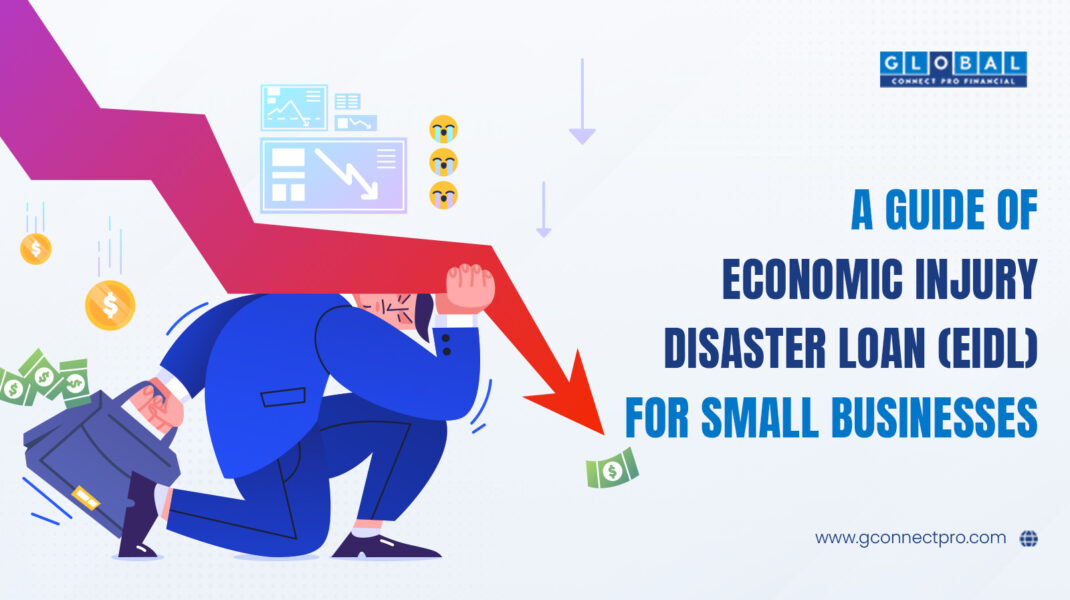A Guide of Economic Injury Disaster Loan (EIDL) for Small Businesses

Today’s small businesses must contend with a variety of obstacles, such as unanticipated natural disasters and economic downturns. A pandemic, a natural disaster, or just a difficult period in the market can all cause businesses to struggle to survive. Having access to financial support during difficult times can be extremely beneficial. The Economic Injury Disaster Loan (EIDL) program is one source of assistance. We’ll examine EIDL definition, operation, and potential uses for small businesses in this guide.
What is EIDL?
Economic Injury Disaster Loan is referred to as EIDL. The Small Business Administration (SBA) oversees this program, which aims to give financial support to non-profit organizations, small businesses, and agricultural cooperatives that have experienced significant financial losses due to natural disasters or other unanticipated events. EIDL, as opposed to conventional loans, is made expressly to assist companies in recovering from financial losses as opposed to physical harm.
How Does EIDL Work?
The SBA may designate an area as a disaster area in the event of a hurricane, flood, or pandemic. Businesses in the affected area can then apply for an EIDL after this declaration is made. Information regarding the financial standing of the company, the degree of the economic harm incurred, and the intended use of the funds to mitigate the effects of the disaster are usually required during the application process.
Low interest rates and extended repayment terms are two important characteristics of EIDL that make them more accessible to small businesses that might be having financial difficulties. EIDL can also be used for other purposes, such as paying bills that are unpaid because of the disaster’s effects, payroll, accounts payable, and fixed debts.
Benefits of EIDL
1. Financial Support
In difficult economic times, EIDL offers much-needed financial support to businesses. EIDL funds can help businesses weather the storm and come out stronger on the other side, whether it’s paying for operating expenses or keeping workers on the payroll.
2. Low Interest Rates
Since EIDL often has lower interest rates than traditional loans and is a more cost-effective choice for small businesses. This can lessen the financial strain that comes with taking out a loan during hard times.
3. Versatile Use of Funds
EIDL funds are available for a range of uses, providing companies with the adaptability they require to take care of their most urgent requirements. EIDL funds can be used to support almost any aspect of the business, including rent payments, inventory purchases, and customer acquisition marketing expenditures.
4. Long Repayment Terms
Long repayment terms are a common feature of EIDL, enabling businesses to spread the cost of borrowing over a longer time frame. This can lessen the financial strain on repayment and provide companies with the breathing room they require to recuperate and rebuild.
How to Apply for EIDL
The first step is to go to the SBA website and complete the online application if you think your business could be eligible for an EIDL after a disaster. Information about your company, financial status, and how the disaster has affected your operations will all be requested on the application. Following submission of your application, the SBA will assess it and decide if you are eligible for an EIDL.
It’s crucial to apply as soon as possible after the disaster occurs because the application process can be lengthy. Furthermore, make sure all the information on your application is accurate and complete to prevent any delays or possible problems with your loan.
Conclusion
In conclusion, EIDL can be a valuable resource for small businesses facing economic hardship due to disasters or other unforeseen circumstances. By providing financial assistance at low-interest rates with flexible repayment terms, EIDL helps businesses weather the storm and emerge stronger on the other side. If your business has been affected by a disaster, consider exploring the option of an EIDL to help get you through this challenging time.
Remember, you’re not alone in this journey. The SBA and other government agencies are here to support you and your business every step of the way. So don’t hesitate to reach out and explore the resources available to you. Together, we can overcome any challenge and build a brighter future for small businesses everywhere.


Write a reply or comment
You must be logged in to post a comment.